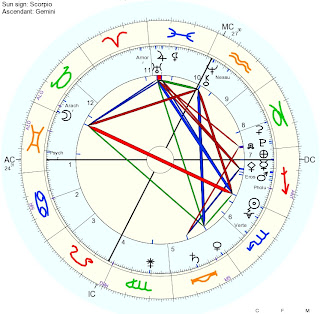Pulse of the Middle Kingdom
Twelve bronze animals of the Chinese zodiac from the Garden of Perfect Brightness. (ArThemis)
Astrology is based on a set of universal principles. In Western astrology, each person’s chart carries energetic patterns that present a multitude of options at any given moment, depending on factors such as environmental, socioeconomic and cultural circumstances, as well as karmic load, DNA, and innate abilities.
In other words, a birth chart is not a map of frozen formulas. When combined with elements like consciousness and free will, it offers insight into how we attract and experience situations, as well as how we respond and make choices at pivotal moments.
Every astrological inquiry depends on the unique energetic structure of a chart, the specific context, the timing of events, and the astrologer’s capacity to interpret all these layers meaningfully. It is not about offering a one-size-fits-all answer, but rather about uncovering a deeper awareness of how an individual is naturally inclined to engage with the world, relate to others, establish boundaries, and care for their own well-being.
In professional matters, for example, an astrologer may examine planetary configurations related to the 10th and 4th house axis (career and vocation / home and inner life), assess transits to personal planets or Saturn, and perform a series of advanced computations. Through this, they can help illuminate potential paths and offer guidance on how to navigate specific periods with greater clarity and purpose.
Each astrological system reflects and is shaped by the cultural lens through which it developed. The choice of zodiac symbols, the mathematics used in chart calculation, and the interpretive frameworks all influence how a birth chart is read and understood.
The Chinese system, embedded in a distinct cultural frame, though celestial in orientation, can’t be considered an astrological system in the western sense.
It is not based on the direct observation of the stars or planetary positions through the zodiac. Instead, it is structured around symbolic and cosmological correspondences rooted in time cycles.
The Chinese system relies on a 60-year sexagenary cycle, created by pairing the Ten Heavenly Stems with the Twelve Earthly Branches. The Twelve Branches refer to an animal zodiac, while the Ten Stems represent the Five Elements—Wood, Fire, Earth, Metal, and Water—expressed through Yin and Yang polarities. This framework is not related to planetary motion across the sky, but to a rhythmic interplay of abstract energies.
The twelve-year repetition of the zodiac animals in Chinese tradition coincides with Jupiter’s approximate 12-year cycle to complete a full revolution around the Sun. Although the Chinese system does not make direct reference to Jupiter’s motion, it clearly employs the 12-year cycle as a structuring principle. In this context, Jupiter’s motion serves more as a celestial timekeeper rather than a dynamic agent in a chart. Its role is temporal rather than positional, marking shifts in energetic patterns from year to year. Furthermore, the association of Jupiter with the Wood element does reflect its expansive and generative character, linking its symbolism with natural life cycles and growth.
In astrological terms, the Chinese calendar is considered solilunar, as it measures time through a combination of solar and lunar cycles and coordinates lunar months with the solar year. This integration of Moon and Sun is central to its date calculations and the timing of zodiacal transitions. The beginning of a new zodiacal year—marked by the Chinese New Year—is not determined by the Sun’s ingress into a specific zodiacal sign or constellation, but through the intercalation of solar terms with lunar phases.
Western astrology relies on the observation of planetary positions and their angular relationships within the zodiac. Its interpretations stem from the interplay of archetypes, each associated with specific qualities and symbolic meanings. In contrast, the Chinese system functions through analogy and symbolic resonance. Where astrological systems are grounded in astronomy and celestial mapping, the Chinese system decodes time through recurring cycles, dynamic balance, and elemental transformation. It reflects a cultural worldview in which human life is woven into abstract rhythms and patterns that unfold over time.
The core interpretive model of the Chinese system, the Four Pillars of Destiny (BaZi), calculates a person’s fate based on the year, month, day, and hour of birth, each represented by a combination of a Heavenly Stem and an Earthly Branch. This configuration offers a map of elemental interactions across time and is used to interpret an individual’s nature, life trajectory, relationships, and key turning points. It differs fundamentally from the Western natal chart, which maps the positions of planets at the time of birth across the twelve zodiac houses.
While Vedic astrology shares a lunar emphasis with the Chinese system and makes use of symbolic nakshatras and planetary periods, it remains rooted in the actual sidereal positions of stars and planets. Tibetan astrology, though deeply influenced by the Chinese model, incorporates Indian calculations and ritual applications, blending metaphysical systems. Arabic astrology, with roots in Persian and Greek traditions, is also lunar but retains a strong basis in planetary transits, lunar phases, and precise celestial timing. Despite their differences, these systems align more closely with the original meaning of “astrology” as the study of the stars.
By contrast, the Chinese system might be more accurately described as a cosmology—a metaphysical discipline that seeks to align the rhythms of Heaven and Earth, and the notion of time with human life.
It is not based on empirical observation but on resonance, pattern identification, and principles such as Yin and Yang, balance, and transformation. Its purpose is not to describe psychological states but to harmonize human action with the unfolding of fate, and a certain cosmic order.
In this sense, it offers a very different lens and set of references through which to navigate the complexities of life.
x A
not for translation or reproduction, and not for processing by AI — all rights reserved. © StellArium & Ethereal Counterparts






